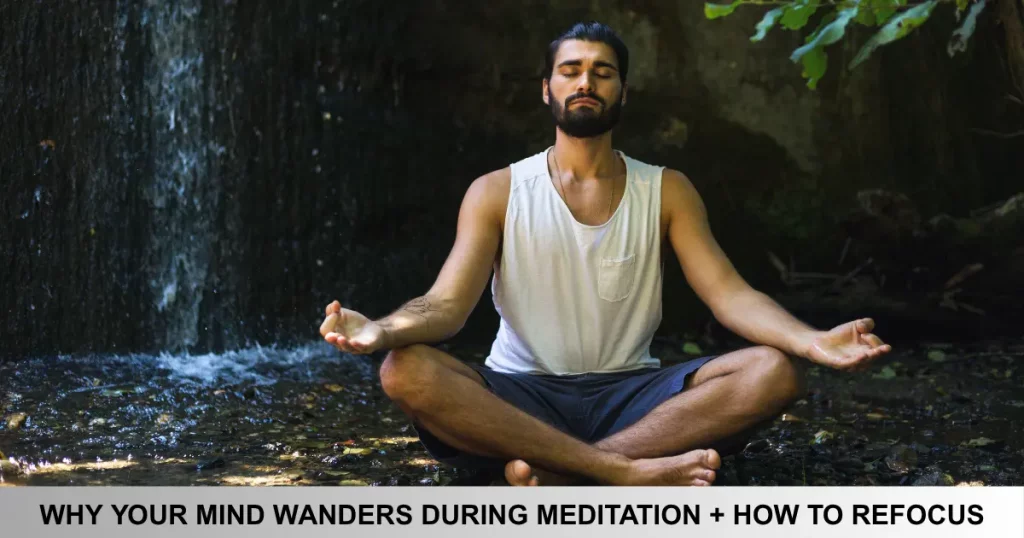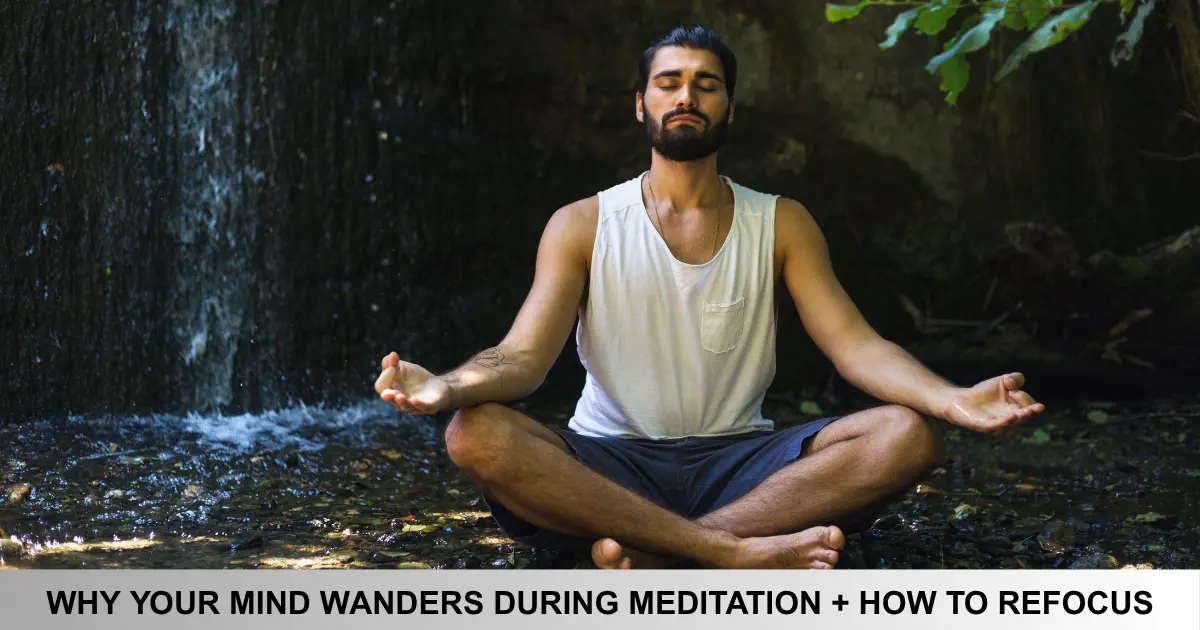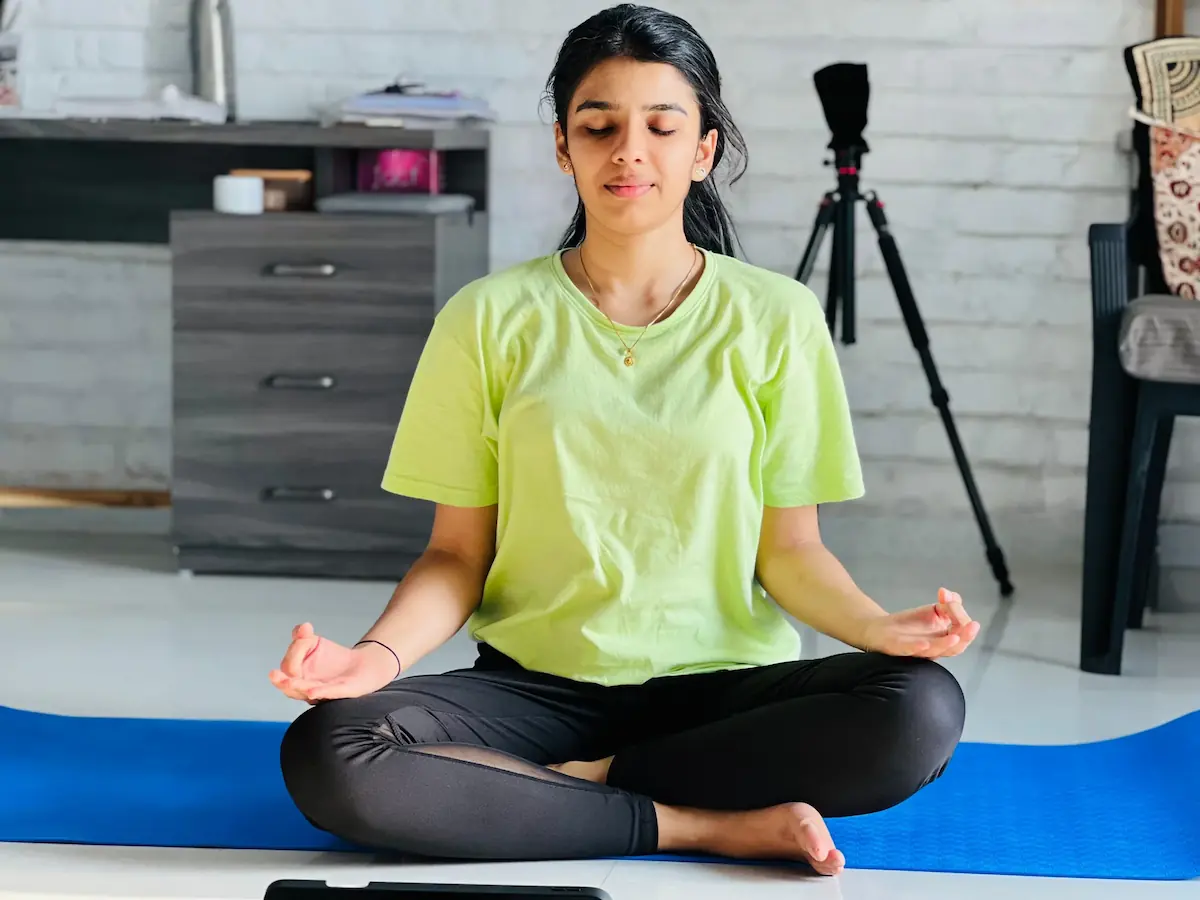Who Can Practice and When Is the Best Time?
Who:
Anyone regardless of age, gender, or spiritual background—can practice meditation. Whether you’re a student, a busy professional, or a retiree, this practice is accessible and beneficial.
Best Time to Meditate:
- Morning (Brahma Muhurta – ~4 AM to 6 AM): When the mind is naturally calm.
- Evening (Sunset): To release the mental noise of the day.
- Before Bed: For stress relief and better sleep.
You can also choose any quiet time that suits your lifestyle. The key is consistency, not perfection.

Why Does Your Mind Wander in Meditation?
The Nature of the Mind: Always in Motion
The mind (manas) is not meant to be still. It constantly:
- Compares
- Recalls
- Desires
- Judges
In meditation, when external noise quiets, internal noise gets loud. That’s not failure it’s awareness. Here’s why this happens:
Common Reasons for Mental Wandering
- Unprocessed Thoughts (Samskaras)
Your mind has absorbed thousands of impressions all day. Meditation allows them to rise and be seen. - Overstimulation & Habitual Distraction
We’re used to constant input phones, work, social media. Silence feels unnatural, so the mind reaches for “something.” - Inner Resistance (Tamasic Inertia)
Stillness feels like change and the mind resists it. This is normal. - Desire & Attachment
Meditation often brings up emotional connections and unfulfilled desires. They surface so you can observe and release them.
Read More: Yoga vs Gym: Which is Better for Weight Loss, Stress & Fitness?
Step-by-Step Meditation Guide to Calm the Wandering Mind
Step 1: Prepare with Sukhasana (Easy Pose) or Vajrasana (Thunderbolt Pose)
Sit comfortably with a straight spine. Use a cushion if needed.
Breathing cue: Inhale deeply through the nose (4 seconds), exhale gently (6 seconds). Let the breath be your entry point.
Step 2: Choose Your Anchor
- 🫁 Breath (feel the nostrils or belly rise)
- 🔥 Visualisation (like a candle flame)
- 🕉️ Mantra (e.g., “So Hum” or “Om”)
Each time the mind wanders, gently return to this anchor—without judgment.
Step 3: Practice Sakshi Bhava – Become the Witness
Watch your thoughts like clouds passing in the sky.
Say internally: “I see you, thought. I’m returning to my breath.”
Step 4: Keep It Short But Consistent
Start with just 5–10 minutes daily. Gradually build up to 15–20 minutes.
Consistency is more powerful than duration.
Step 5: Close With Reflection (Optional)
Spend 1–2 minutes silently journaling or sitting with eyes closed. Let any emotions or insights settle.
Common Mistakes to Avoid
- Forcing the mind to be silent (It only causes frustration)
- Judging yourself for wandering (Compassion is key)
- Skipping daily practice (Habit builds calmness)
- Comparing your progress with others (Your journey is unique)
Benefits of Daily Practice
- 🌿 Reduces anxiety and stress
- 🧠 Improves focus and mental clarity
- 💓 Cultivates emotional balance
- 🌌 Deepens self-awareness and intuition
Modifications & Tips for Beginners
- Sit on a chair if sitting on the floor is uncomfortable.
- Use guided meditation apps or recordings.
- Try walking meditation if sitting is too difficult.
- Set a timer with a gentle bell to avoid checking the clock.
Suggested Routine Plan
| Day | Duration | Focus |
|---|---|---|
| Mon–Fri | 10 mins | Breath or Mantra |
| Saturday | 15 mins | Visualization |
| Sunday | Optional | Journaling/Reflection |
Tip: Meditate at the same time each day to form a mental habit loop.
Read More: 9 Yoga Poses for Faster Recovery: Soothe Your Muscles After a Tough Workout
Frequently Asked Questions (FAQs)
Q1: Is it okay if I think a lot during meditation?
Yes! Awareness of thoughts means you’re meditating correctly. Don’t aim for emptiness—aim for witnessing.
Q2: I feel sleepy during meditation. What should I do?
Try meditating in a well-lit area with your spine upright. Morning practice helps reduce drowsiness.
Q3: Can I meditate lying down?
Yes, especially if you have physical pain. But avoid it if you tend to fall asleep.
Q4: How long until I feel the benefits?
Most people notice changes in focus and calmness within 2–3 weeks of regular practice.
Final Thoughts: Let the Wandering Be the Way
Meditation isn’t about controlling the mind it’s about watching it. When your mind wanders, it’s not a failure, but an invitation to return to awareness. As Patanjali reminds us:
“Abhyasa Vairagyabhyam Tan Nirodhah”
(Through steady practice and gentle detachment, the mind is calmed.)

